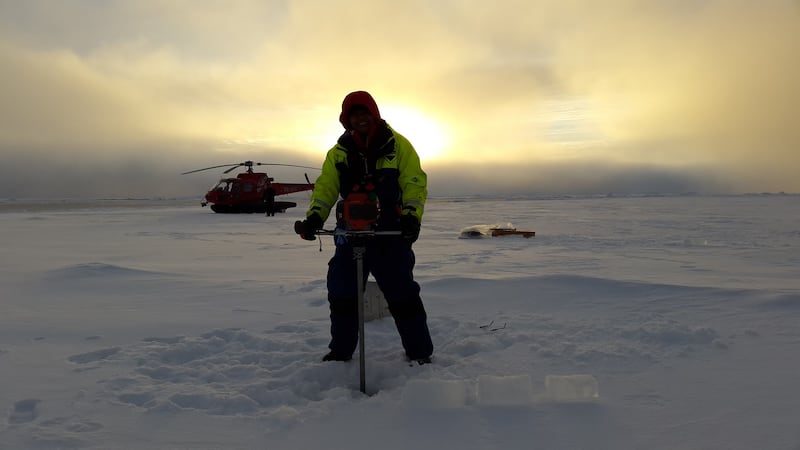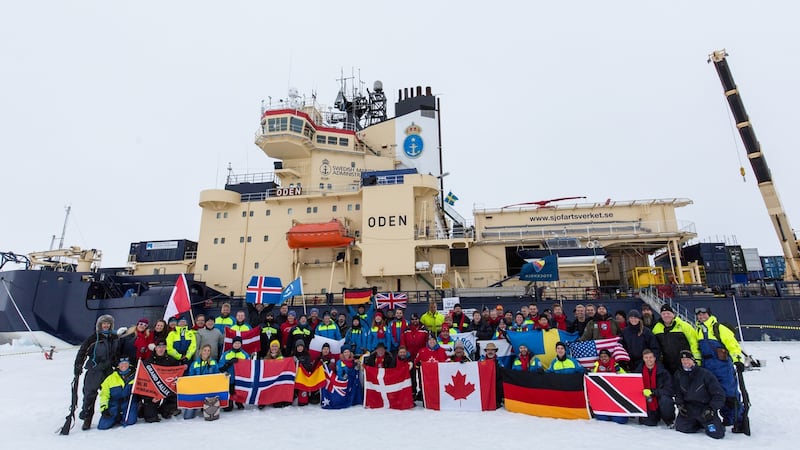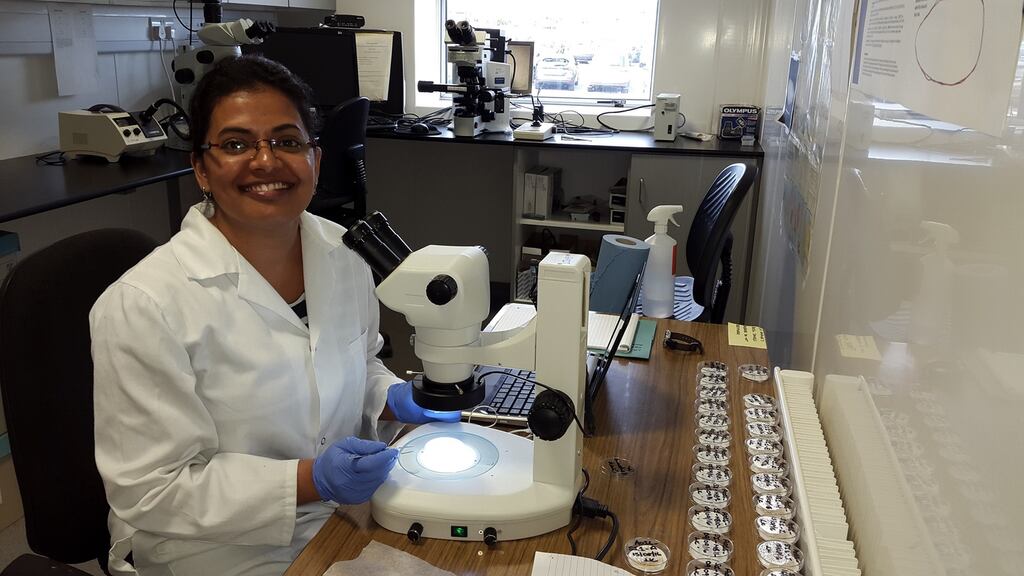La Daana Kanhai, PhD Candidate on the Doctoral Programme in Marine Ecosystem Health and Conservation (Mares)
Galway-Mayo Institute of Technology and Plymouth University
We have been hearing a lot lately about plastic pollution in the ocean. What aspect do you work on?


I analyse microplastics in ocean water samples. These are small pieces of plastic that are less than five millimetres in diameter. They can get into the ocean when we wash clothes in the washing machine – fibres such as polyester and polyamide can be washed out to sea. Plus plastic “microbeads” in cosmetics get washed down the sink. Then there are also larger pieces of plastic litter that get into the ocean and fragment into smaller pieces.
What happens then?
The trouble is that living organisms in the ocean can ingest these small plastics, and that can influence their health. Some microplastics are being found in harvested fish and shellfish, meaning there is the potential for humans to ingest microplastics too.
How do you figure out where and what the microplastics are?
The water samples I look at are collected on boat trips. I have collected samples along a transect in the Atlantic Ocean between the Bay of Biscay and Capetown, and in the Arctic while on a Swedish ice-breaker. I look at microplastics from the water samples under a microscope and analyse each particle using a technique called Fourier Transform Infrared Spectroscopy or FTIR to find out what polymer it is.
You collected 76 samples on that Atlantic trip – what did you find?
We saw the average abundance of microplastics was 1.15-1.45 microplastics per metre-cubed volume of seawater, even though we sampled far from the coast. Of the particles we analysed, 63 per cent were rayon and 37 per cent were synthetic polymers.
And what did you find in the Arctic?
We haven’t published the details yet, but we did find microplastics in the samples there too. Ocean currents can transport plastics there, and it’s thought the ice may be acting as a sink for microplastics. This is not good news because the sea ice is melting in the Arctic, so we need more data about what plastic is there.
What can we do to help stem this rising tide of plastics in the oceans?
The choices we make as individuals matter. One of the things that we can do is to reduce our use of single-use plastic items – for example, plastic water bottles, cutlery, plastic freezer bags, shopping bags. Ireland took a good, decisive step in changing the culture to re-usable shopping bags.
How did you get interested in this area?
Environmental pollution captured my attention during my early university years. In Trinidad, I focused on chemical contaminants in wetlands. I had no plans to leave, but then I saw this EU-funded Mares project advertised about microplastic pollution and I applied.
What do you like about the research?
It is very exciting, and I really enjoy the trips to collect samples. Also, you are not doing one thing all the time, it is a mix of lab work and office work and you get to write papers and go to conferences.
And what do you do when you are not researching?
During the week, I try to do some sort of exercise in the evenings. Then at the weekends I teach at the Galway United Methodist Presbyterian Church Sunday School and work with the youths. I think it’s important to not just focus on yourself, but to focus on others – and I enjoy working with the kids; they have unique outlooks on life.








